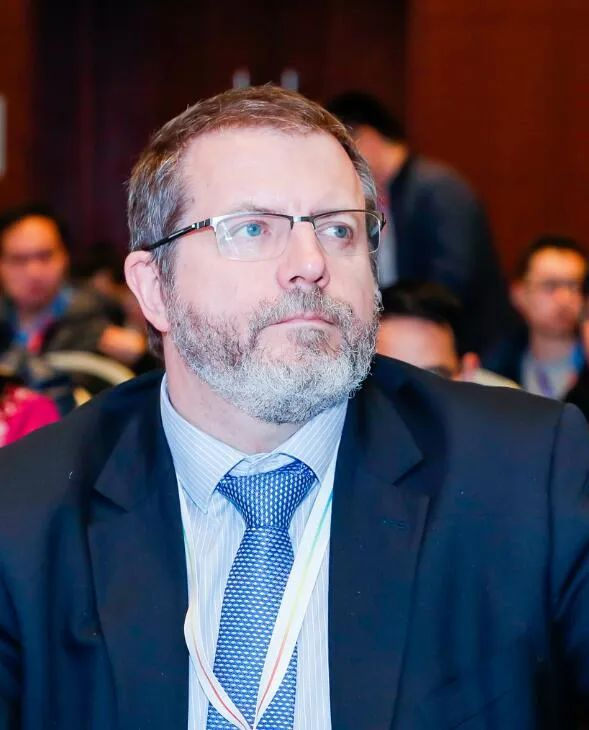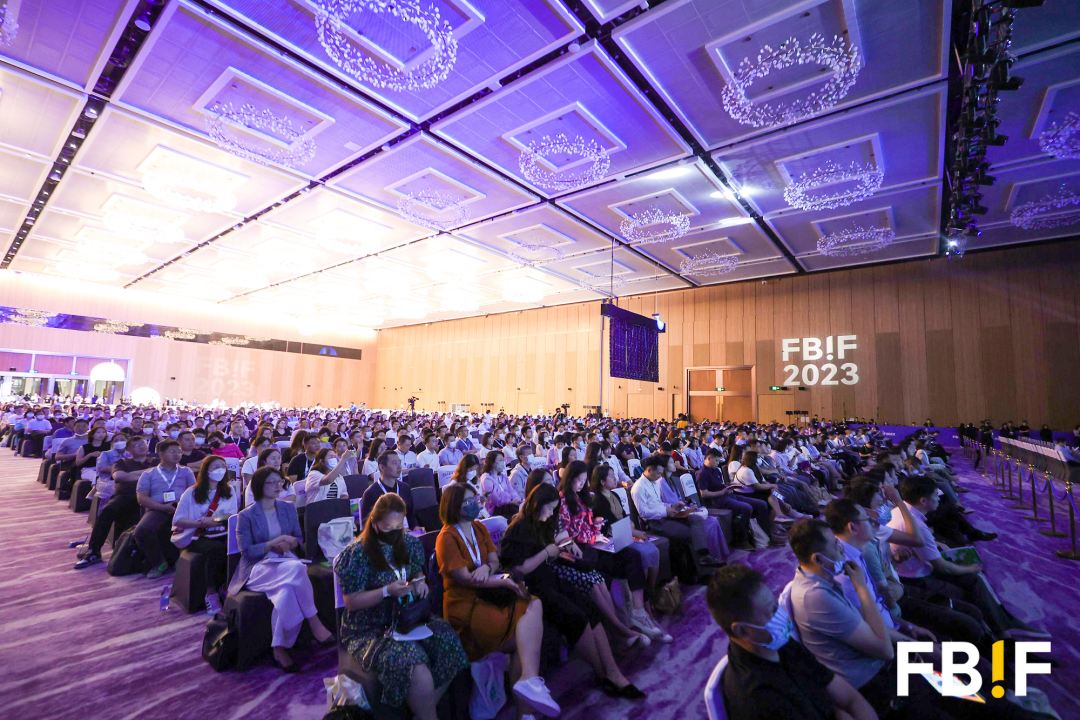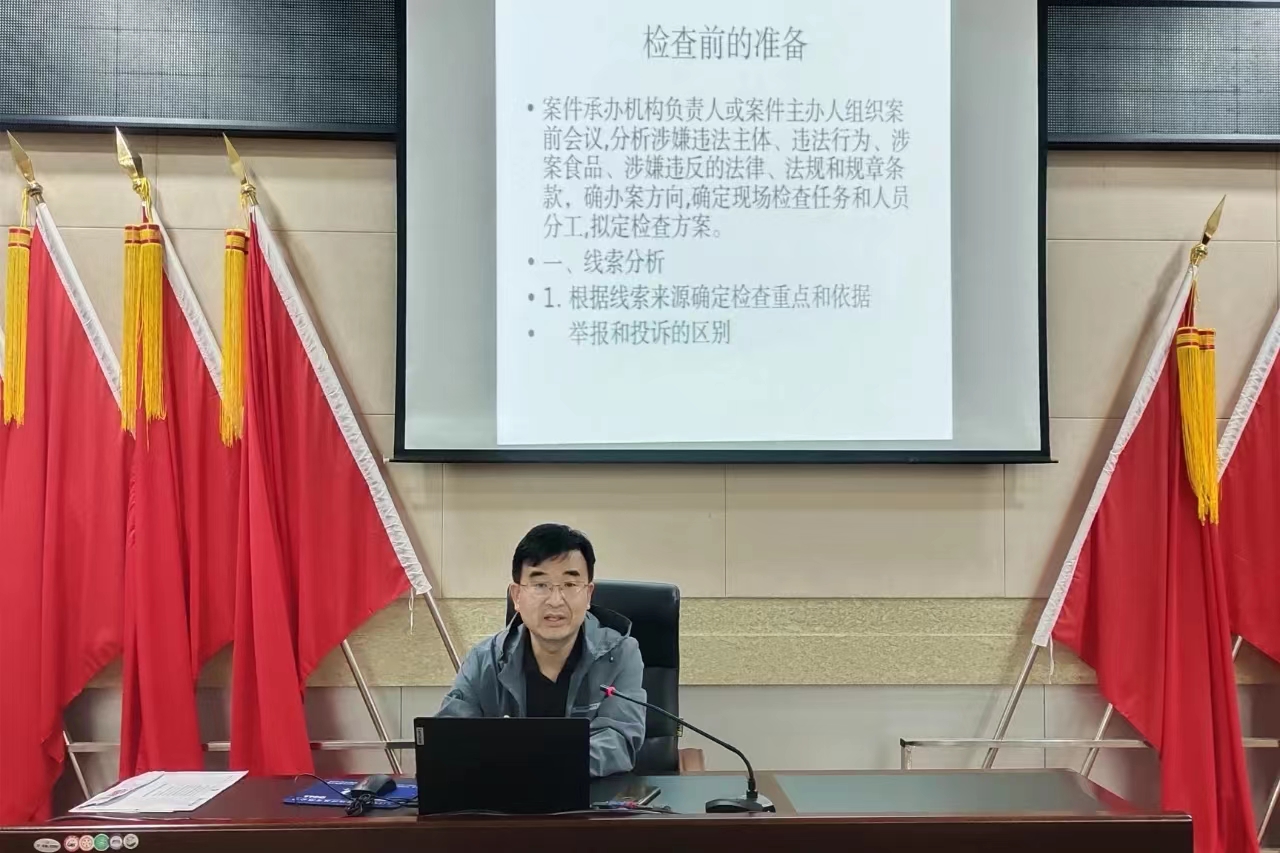BCEIA2023學術報告會大會報告(一)
2023-07-17 15:51:08 來源:
語言:英文
時間:2023年9月6日
地點:學術會議區W201
邀請全球知名科學家介紹DNA存儲、納米毒理學等前沿科學技術,分享球差電鏡、微型化雙光子顯微鏡等高端儀器的研究進展,同時就質譜法和核磁共振法等研究生物大分子結構及功能、新型分離介質製備及蛋白藥物、疫苗純化等最新應用進行探討和展望。
Paul Westerhoff
教授, 美國亞利桑那州立大學

報告題目:Analytical Strategies to Assess PFAS Removal and Lifecycle Fate during Adsorption or Transformative Water Treatment Processes
報告摘要
Per- and polyfluoroalkyl substances (PFAS) occur in ground and surface water sources across the globe, and proposed drinking water regulations are driving PFAS treatment technology development and implementation. This presentation will first address current treatment technologies, which utilize adsorption (liquid to solid phase transformation), membranes (liquid to liquid separations) or transformative (oxidation or reduction) processes. Examples will be provided how treatment process efficiencies for “real waters” and how the processes challenge analytical methods. Second, the presentation addresses end-of-life for residuals (e.g., activated carbon) that contains PFAS, which will require incineration. Tracking PFAS during incineration requires unique analytical approaches to track fluorinated aqueous, gaseous and solid-phase species. Overall, the presentation will demonstrate how to match PFAS analytical strategies to PFAS drinking water treatment processes.
個人簡介
Dr. Paul Westerhoff is a Regents Professor and Fulton Chair of Environmental Engineering in the School of Sustainable Engineering and the Built Environment at Arizona State University. Since joining ASU he has held various administrative positions. After serving as the Civil and Environmental Engineering Department Chair he was the Founding Director for the School of Sustainable Engineering and the Built Environment, and served later as Associate & Vice Dean of Research in Engineering and ASU Vice Provost for Academic Programming. Dr. Westerhoff is the Deputy Director of a NSF ERC for Nanotechnology Enabled Water Treatment and co-Deputy Director of the NSF STC Science and Technologies for Phosphorus Sustainability Center. His research group addresses questions related to What pollutants exist in the environment? If they occur, do they matter? If they occur and matter, what do we do to address them? with a focus on pollutants in natural and engineered water systems. He has over 400 journal publications (H-index>100) and multiple patents. He is the recipient of the 2020 A.P. Black award, 2019 NWRI Clarke Prize, 2015 ASU Outstanding Doctoral Mentor, 2013 ARCADIS/AEESP Frontier in Research Award, and 2006 Paul L. Busch Award. He was elected to the National Academy of Engineering in 2023.
Paul Breitenbecher
CEO, Breiten Associates LLC

報告題目:False positive, negative, and unexpected Drug Testing Results in the Urine Toxicology Laboratory |藥物測試:尿液毒理學實驗室使用篩選法(免疫測定法)和確認法(MS)
報告摘要
In 1995 I co-authored a short article entitled “False-positive Immunoassay Results for Urine Benzodiazepine in Patients Receiving Oxaprozin (Daypro)”. This was published when rapid urine drug screening test methods were first becoming available. The laboratory community was starting to realize that not all assays can be tested for all of the thousands of drugs, substances or endogenous compounds that may potentially cause result errors.
There are false positive, false negative and unexpected patient urine drug test results that occur in the Urine Toxicology laboratory.
How does one research these results and assist the clinician in helping to assess these results to treat their patient?
Unexpected urine drug test results can occur during any phase of the testing process; however, the most common usual results occur during the pre- analytical or patient collection phase. During this phase patients can provide “fake” urine, take substances that can affect the testing method, or they can adulterate/dilute their urine specimen.
Depending on the screening test method used, the test method can be impacted by a variety of substances that can produce either false negative, false positive or usual results. Screening results can also be different than the confirmation results making interpretation of patient results even more confusing.
During this presentation we will review a basic screening test method and confirmation method. And discuss some of these unexpected urine drug test results.
個人簡介
Paul Breitenbecher在羅得島大學、康涅狄格大學、杜肯大學等高校進修了研究生課程,曾在哈佛先鋒醫學中心、諾華生物醫學研究院、病理實驗室公司(Inform Diagnostics,原名Miraca Life Sciences Inc.)等知名醫學機構和企業的實驗室從事管理工作。現任Breiten Associates LLC公司的首席執行官,為臨床實驗室和CRO領域的科研人員提供采購、谘詢等方麵的技術支持。
Robert Wielgosz
國際計量局(BIPM)化學部主任

報告題目:Certified Reference Materials for a Global Greenhouse Gas Monitoring Infrastructure
報告摘要
Understanding sources and sinks of Greenhouse Gases (GHG) and the impact of policies to mitigate emissions provides a key tool for action against Climate Change. GHG emissions and uptake can be determined through measurement systems that include in situ measurement of GHG concentration at varying levels of spatial distribution. These measurements together with wind-speed measurements and numerical weather prediction and dispersion models can be used to determine spatially and time resolved GHG emissions and sinks. Maintaining a global system of such measurements, as envisaged, for example, by the WMO initiative on a coordinated global Greenhouse Gas Monitoring Infrastructure, requires close attention to quality assurance and equivalence of measurements from different sites. Significant emissions may lead to small changes in GHG concentration, requiring highly consistent calibration standards at different measurement sites. The presentation will cover the establishment and characterization of CO2 in air standards for the measurements of concentration as well as isotope ratio, for source apportionment, that are required in GHG measurement networks. Generating the highest precision measurements of CO2 in air requires adopting metrological traceability to defined sets of primary standards, the so-called scale approach. The conversion of CO2 in air amount fraction values from one scale to another requires the scale relationships to be well known, noting that the requirement for internal consistency of standards within a scale, such as the WMO-CO2-X2019 scale, is at the 0.01 μmol/mol level, and consistency between different scales should not exceed the 0.02 μmol/mol level [1]. Certified reference materials that are needed to calibrate both in-situ based optical/laser based GHG amount faction and isotope ratio measurements as well as mass spectrometric laboratory-based measurements of isotope ratio will be described, as well as on-going comparisons to verify their equivalence. These comparisons are supporting National
個人簡介
Robert Wielgosz博士是位於法國的國際計量局(BIPM)化學部的主任,其氣體計量實驗室負責組織空氣質量和溫室氣體標準國際比對。這些比對為由國家計量院(NMIs)和指定機構(DIs)組成的世全球大氣監測網絡提供標準支撐。他是國際計量委員會(CIPM)氣候變化和環境領域任務組成員,也是國際計量局-世界氣象組織(WMO)“氣候行動中的計量”研討會指導委員會主席。他發表測量科學相關論文60餘篇,包括世界氣象組織大氣氣體成分測量指南。他擁有劍橋大學伊曼紐爾學院(英國)的自然科學碩士學位,巴斯大學(英國)的博士學位,並在烏爾姆大學(德國)完成了皇家學會歐洲交流研究。
Oliver J. Schmitz
教授德國杜伊斯堡-埃森大學

報告題目:Development of a New Ionization Source for Single Cell Metabolome Analysis
報告摘要
Although the unrevealing of cellular heterogeneity is limiting for the understanding of complex processes in cancer research as e.g. its influence on the process of metastasising, current research still depends on bulk analysis technologies as no reliable method could be established for real single cell metabolome analysis yet.
The necessary analytical requirements that such a method for single cell metabolome analysis needs in terms of detection limit, sample amount and specificity will be discussed in detail in this presentation. Also, still unsolved problems will be addressed and put up for discussion.
Subsequently, our current work on an ion source, which should be able to destroy the cell and thus release the analytes and ionize them by means of Dielectric Barrier Discharge, will be presented. The current status of developments from the literature and from us will be briefly presented in this talk.
個人簡介
In 2009 Oliver J. Schmitz got a full professor in Analytical Chemistry at the University of Wuppertal (BUW). Between 2010 and 2012 he was the chair of the Analytical Chemistry department at BUW. Since 2013, Schmitz has been a full professor at the University of Duisburg-Essen and heads the Institute for Applied Analytical Chemistry.
2009 he cofounded the company iGenTraX UG which develops new ion sources and units to couple separation techniques with mass spectrometers. In 2011 he was one of the founding directorsof the Interdisciplinary Centre for Pure and Applied Mass Spectrometry, University of Wuppertal. Since 2013, Schmitz is also one of the chairmen of the analytica conferences in China and Vietnam and in 2018, together with Agilent Technologies, he founded the Teaching and Research Center for Separation (TRC).
The research fields of Prof. Schmitz are the development of ion sources, use and optimization of multi-dimensional LC and GC, ion mobility-mass spectrometry and coupling analytical techniques with mass spectrometers. Furthermore, he is working about origin of life and metabolomics. Prof. Schmitz was awarded the scholar-in-training award of the American Association for Cancer Research in 2003, the Gerhard-Hesse Prize for chromatography in 2013 and in the same year the Fresenius Lecturer. 2018 he was awarded with the Waksmundzki Medal Award for Analytical Chemistry of the Polish Academy of Sciences.


時間:2023年9月6日
地點:學術會議區W201
邀請全球知名科學家介紹DNA存儲、納米毒理學等前沿科學技術,分享球差電鏡、微型化雙光子顯微鏡等高端儀器的研究進展,同時就質譜法和核磁共振法等研究生物大分子結構及功能、新型分離介質製備及蛋白藥物、疫苗純化等最新應用進行探討和展望。
Paul Westerhoff
教授, 美國亞利桑那州立大學

報告題目:Analytical Strategies to Assess PFAS Removal and Lifecycle Fate during Adsorption or Transformative Water Treatment Processes
報告摘要
Per- and polyfluoroalkyl substances (PFAS) occur in ground and surface water sources across the globe, and proposed drinking water regulations are driving PFAS treatment technology development and implementation. This presentation will first address current treatment technologies, which utilize adsorption (liquid to solid phase transformation), membranes (liquid to liquid separations) or transformative (oxidation or reduction) processes. Examples will be provided how treatment process efficiencies for “real waters” and how the processes challenge analytical methods. Second, the presentation addresses end-of-life for residuals (e.g., activated carbon) that contains PFAS, which will require incineration. Tracking PFAS during incineration requires unique analytical approaches to track fluorinated aqueous, gaseous and solid-phase species. Overall, the presentation will demonstrate how to match PFAS analytical strategies to PFAS drinking water treatment processes.
個人簡介
Dr. Paul Westerhoff is a Regents Professor and Fulton Chair of Environmental Engineering in the School of Sustainable Engineering and the Built Environment at Arizona State University. Since joining ASU he has held various administrative positions. After serving as the Civil and Environmental Engineering Department Chair he was the Founding Director for the School of Sustainable Engineering and the Built Environment, and served later as Associate & Vice Dean of Research in Engineering and ASU Vice Provost for Academic Programming. Dr. Westerhoff is the Deputy Director of a NSF ERC for Nanotechnology Enabled Water Treatment and co-Deputy Director of the NSF STC Science and Technologies for Phosphorus Sustainability Center. His research group addresses questions related to What pollutants exist in the environment? If they occur, do they matter? If they occur and matter, what do we do to address them? with a focus on pollutants in natural and engineered water systems. He has over 400 journal publications (H-index>100) and multiple patents. He is the recipient of the 2020 A.P. Black award, 2019 NWRI Clarke Prize, 2015 ASU Outstanding Doctoral Mentor, 2013 ARCADIS/AEESP Frontier in Research Award, and 2006 Paul L. Busch Award. He was elected to the National Academy of Engineering in 2023.
Paul Breitenbecher
CEO, Breiten Associates LLC

報告題目:False positive, negative, and unexpected Drug Testing Results in the Urine Toxicology Laboratory |藥物測試:尿液毒理學實驗室使用篩選法(免疫測定法)和確認法(MS)
報告摘要
In 1995 I co-authored a short article entitled “False-positive Immunoassay Results for Urine Benzodiazepine in Patients Receiving Oxaprozin (Daypro)”. This was published when rapid urine drug screening test methods were first becoming available. The laboratory community was starting to realize that not all assays can be tested for all of the thousands of drugs, substances or endogenous compounds that may potentially cause result errors.
There are false positive, false negative and unexpected patient urine drug test results that occur in the Urine Toxicology laboratory.
How does one research these results and assist the clinician in helping to assess these results to treat their patient?
Unexpected urine drug test results can occur during any phase of the testing process; however, the most common usual results occur during the pre- analytical or patient collection phase. During this phase patients can provide “fake” urine, take substances that can affect the testing method, or they can adulterate/dilute their urine specimen.
Depending on the screening test method used, the test method can be impacted by a variety of substances that can produce either false negative, false positive or usual results. Screening results can also be different than the confirmation results making interpretation of patient results even more confusing.
During this presentation we will review a basic screening test method and confirmation method. And discuss some of these unexpected urine drug test results.
個人簡介
Paul Breitenbecher在羅得島大學、康涅狄格大學、杜肯大學等高校進修了研究生課程,曾在哈佛先鋒醫學中心、諾華生物醫學研究院、病理實驗室公司(Inform Diagnostics,原名Miraca Life Sciences Inc.)等知名醫學機構和企業的實驗室從事管理工作。現任Breiten Associates LLC公司的首席執行官,為臨床實驗室和CRO領域的科研人員提供采購、谘詢等方麵的技術支持。
Robert Wielgosz
國際計量局(BIPM)化學部主任

報告題目:Certified Reference Materials for a Global Greenhouse Gas Monitoring Infrastructure
報告摘要
Understanding sources and sinks of Greenhouse Gases (GHG) and the impact of policies to mitigate emissions provides a key tool for action against Climate Change. GHG emissions and uptake can be determined through measurement systems that include in situ measurement of GHG concentration at varying levels of spatial distribution. These measurements together with wind-speed measurements and numerical weather prediction and dispersion models can be used to determine spatially and time resolved GHG emissions and sinks. Maintaining a global system of such measurements, as envisaged, for example, by the WMO initiative on a coordinated global Greenhouse Gas Monitoring Infrastructure, requires close attention to quality assurance and equivalence of measurements from different sites. Significant emissions may lead to small changes in GHG concentration, requiring highly consistent calibration standards at different measurement sites. The presentation will cover the establishment and characterization of CO2 in air standards for the measurements of concentration as well as isotope ratio, for source apportionment, that are required in GHG measurement networks. Generating the highest precision measurements of CO2 in air requires adopting metrological traceability to defined sets of primary standards, the so-called scale approach. The conversion of CO2 in air amount fraction values from one scale to another requires the scale relationships to be well known, noting that the requirement for internal consistency of standards within a scale, such as the WMO-CO2-X2019 scale, is at the 0.01 μmol/mol level, and consistency between different scales should not exceed the 0.02 μmol/mol level [1]. Certified reference materials that are needed to calibrate both in-situ based optical/laser based GHG amount faction and isotope ratio measurements as well as mass spectrometric laboratory-based measurements of isotope ratio will be described, as well as on-going comparisons to verify their equivalence. These comparisons are supporting National
個人簡介
Robert Wielgosz博士是位於法國的國際計量局(BIPM)化學部的主任,其氣體計量實驗室負責組織空氣質量和溫室氣體標準國際比對。這些比對為由國家計量院(NMIs)和指定機構(DIs)組成的世全球大氣監測網絡提供標準支撐。他是國際計量委員會(CIPM)氣候變化和環境領域任務組成員,也是國際計量局-世界氣象組織(WMO)“氣候行動中的計量”研討會指導委員會主席。他發表測量科學相關論文60餘篇,包括世界氣象組織大氣氣體成分測量指南。他擁有劍橋大學伊曼紐爾學院(英國)的自然科學碩士學位,巴斯大學(英國)的博士學位,並在烏爾姆大學(德國)完成了皇家學會歐洲交流研究。
Oliver J. Schmitz
教授德國杜伊斯堡-埃森大學

報告題目:Development of a New Ionization Source for Single Cell Metabolome Analysis
報告摘要
Although the unrevealing of cellular heterogeneity is limiting for the understanding of complex processes in cancer research as e.g. its influence on the process of metastasising, current research still depends on bulk analysis technologies as no reliable method could be established for real single cell metabolome analysis yet.
The necessary analytical requirements that such a method for single cell metabolome analysis needs in terms of detection limit, sample amount and specificity will be discussed in detail in this presentation. Also, still unsolved problems will be addressed and put up for discussion.
Subsequently, our current work on an ion source, which should be able to destroy the cell and thus release the analytes and ionize them by means of Dielectric Barrier Discharge, will be presented. The current status of developments from the literature and from us will be briefly presented in this talk.
個人簡介
In 2009 Oliver J. Schmitz got a full professor in Analytical Chemistry at the University of Wuppertal (BUW). Between 2010 and 2012 he was the chair of the Analytical Chemistry department at BUW. Since 2013, Schmitz has been a full professor at the University of Duisburg-Essen and heads the Institute for Applied Analytical Chemistry.
2009 he cofounded the company iGenTraX UG which develops new ion sources and units to couple separation techniques with mass spectrometers. In 2011 he was one of the founding directorsof the Interdisciplinary Centre for Pure and Applied Mass Spectrometry, University of Wuppertal. Since 2013, Schmitz is also one of the chairmen of the analytica conferences in China and Vietnam and in 2018, together with Agilent Technologies, he founded the Teaching and Research Center for Separation (TRC).
The research fields of Prof. Schmitz are the development of ion sources, use and optimization of multi-dimensional LC and GC, ion mobility-mass spectrometry and coupling analytical techniques with mass spectrometers. Furthermore, he is working about origin of life and metabolomics. Prof. Schmitz was awarded the scholar-in-training award of the American Association for Cancer Research in 2003, the Gerhard-Hesse Prize for chromatography in 2013 and in the same year the Fresenius Lecturer. 2018 he was awarded with the Waksmundzki Medal Award for Analytical Chemistry of the Polish Academy of Sciences.


熱點推薦
-

ADM首度亮相FBIF2023,探索食品飲料的今天、明天和未來
-

專訪嬰兒水團體標準製定者:為何為嬰兒飲用水製定更高標準?
- 2022世界杯32强赛程表时间
- 2022世界杯预选赛
-

全球食品創新平台第五期已啟動,攜手共創安全、健康、綠色的未來
-

BCEIA2023學術報告會大會報告(一)
-

第二十四屆健康天然原料、食品配料中國展完美收官
-

這場深入產業集群地的螺螄粉與米粉大會,為何吸引眾人關注?
-

北京肉協開展《用水定額 第21部分 屠宰及肉製品加工》標準宣貫
-

預製菜國家級委員會將誕生,定於7月舉辦成立大會
-

下個十年,再造奇跡!FBIF2023開幕,萬人齊聚全球食品盛會
-

第十九屆SIAL創新大賽金銀銅獎官宣發布!
-

推轂貿易 篤行食飲2023 SIAL西雅展(上海)今日盛大開幕
-

攻略筆記來了!SIAL China 國際食品(上海)展5月18日盛大開幕
-

培訓會議在舉行 執法水平大提升
-

跟蹤問效“回頭看” 服務企業不間斷
-

鏈接世界食飲經貿,SIAL 西雅國際食品展(上海)5月18日盛大開幕
-

COSTA深耕高品質即飲奶茶飲料品類 生椰新品全線上市
-

NSF發布《如何用世界杯賽程預測 建立品牌信任》調查報告
-

重磅!BCEIA 2023 後疫情•大健康高峰論壇
-

三十年磨一劍,酪神世家以“五維營養”定義奶酪新標準
-

中乳協第二十八次年會開幕!新乳業斬獲兩項大獎
-

2021年業績增長超過30%,新希望乳業上榜FBIF中國食品飲料百強榜單
-

用食品工藝技術創新成果引領行業高質量發展
-

2022全球高端食品展覽會定檔公告
-

仡佬族非遺雄正醬香酒為何能再度受邀亮相2022進博會人文交流展區
-

呼倫貝爾有機純牛奶上市,金典“限定奶源”布局再落一子!
-

重要公告| 關於SIAL國際食品和飲料展覽會(深圳)的延期通知
-

“提升豬肉供應鏈世界杯賽程預測 ”係列網課第九期即將開講
-

粵東江南國際農產品交易中心水果區試業儀式成功舉辦





